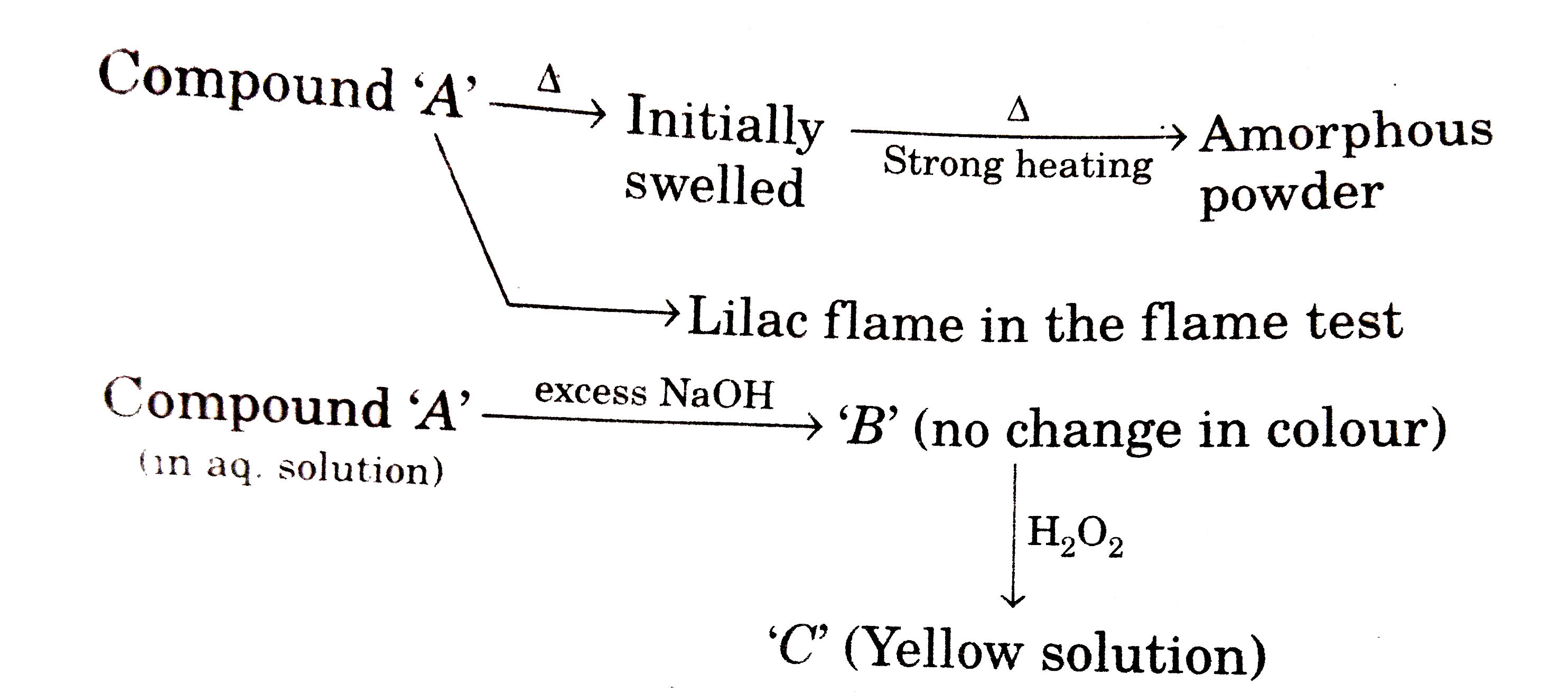Discuss the pattern of variation in the oxidation states of (a)B→TI and (b) C→Pb.
Video Solution
Text Solution
a. Electronic configuration of group 13 elements is ns2np2. B and Al have noble gas core beneath the valence shell electron, whereas Ga,In and TI have fully filled lesser shielding d− and or f-orbital present in-between the noble gas core and valence electron. Since d and f orbitals have lesser shielding effect, Ga, in and Ti exhibit inert part effect, whereas B and Al do not. Hence, B and Al exhibit only one stable oxidation state, i.e. +3, whereas Ga,In and TI due to inert pair effect shows as oxidation state of +1 also, besides group oxidation state of +3.

Down the group (⏐↓), stability of lower oxidation state (+1) increases, i.e. Ga<Tn<TI, whereas that of higher oxidation state (+3) decreases, i.e.Ga>In>TI
b. Electronic configuration of group 14 elements in ns2np2.C and Si have noble gas core beneath the valence shell electrons, whereas Ge,Sn and Pb have fully filled lesser shielding d- and or f-orbital in between the noble gas core and valence shell electrons.
Shielding effect varies in the order:ns>np>nd>nf. Hence,C and Si do not exhibit inert pair effect, whereas Ge,Sn and Pb exhibit inert pair effect. Consequently, C and Si shows as oxidation state, +4 (group oxidation state), whereas Ge,Sn and Pb,besides showing group oxidation state of +4, also shows an oxidation state of +2.Stability of higher oxidation state (+4) decreases down the group (⏐↓),Ge>Sn>Pb,whereas that of lower oxidation state (+2) increases:Ge<Sn<Pb.

|
Updated on:21/07/2023
Topper's Solved these Questions
- BOOK - CENGAGE CHEMISTRYCHAPTER - APPENDIX - INORGANIC VOLUME 1EXERCISE - Exercise very short70videos
APPENDIX - INORGANIC VOLUME 1
- BOOK - CENGAGE CHEMISTRYCHAPTER - APPENDIX - INORGANIC VOLUME 1EXERCISE - Exercise Short146videos
APPENDIX - INORGANIC VOLUME 1
- BOOK - CENGAGE CHEMISTRYCHAPTER - ALKYNESEXERCISE - Exercises (Archives - Analytical and Desriptive Type)4videos
ALKYNES
- BOOK - CENGAGE CHEMISTRYCHAPTER - ATOMIC STRUCTUREEXERCISE - Concept Applicationexercise(4.3)19videos
ATOMIC STRUCTURE
Similar Questions
Knowledge Check
- Question 1 - Select One
The common oxidation states of Ti are
A+2,+3,+4B+2,+3C+3,+4D+3,−4 - Question 2 - Select One
The common oxidation states of Ti are
A+2, +3B+3, +4C-3, -4D+2, +3, +4 - Question 3 - Select One
Predict the highest and lowest oxidation state of (a) Ti and (b) Tl
Aa[0,+3]b[0,+2]Ba[+3,0]b[+4,0]Ca[+4,0]b[+4,0]Da[+4,+2]b[+3,+1]
Account for the variation of acidic character with increases in the oxidation state of central atom
View SolutionName the following:
(a) A transition metal which does not exhibit variation in oxidation state in its compounds.
(b) A compound where the transition metal is the +7 oxidation state.
(c) A member of the lanthanoid series which is well known to exhibit +4 oxidation state.
(d) Ore used in the preparation of Potassium dichromate.View SolutionPredict the maximum and minimum oxidation states for (i) Cl (ii) Ti
View Solution
The compound 'B' is having oxidation state of:View SolutionWhat is the oxidation state of osmium in 7B and 7C, respectively ?
 View Solution
View Solution

